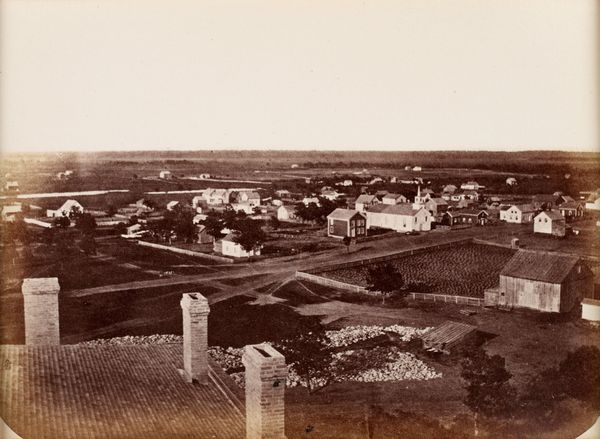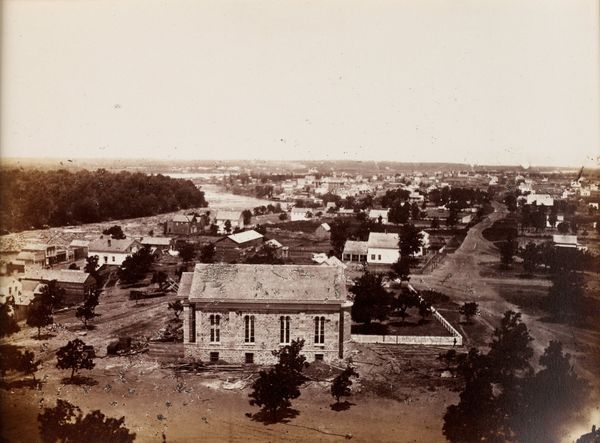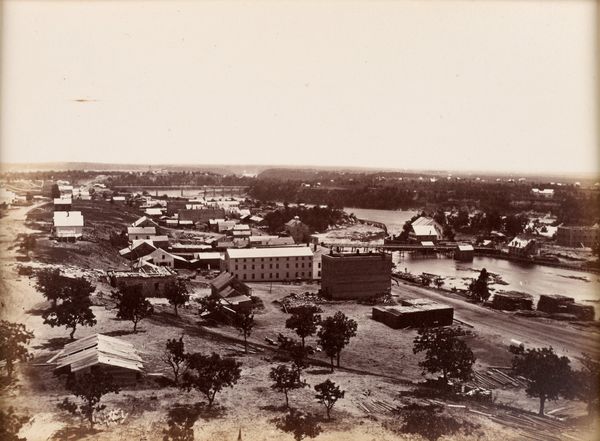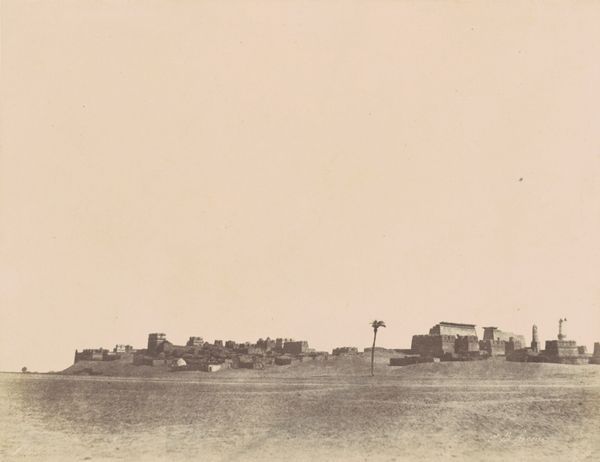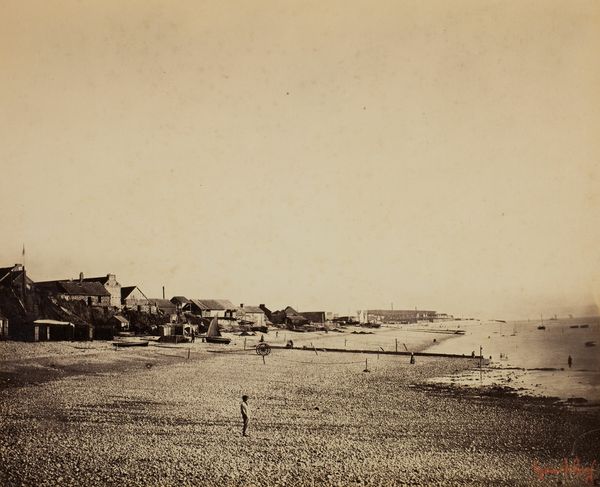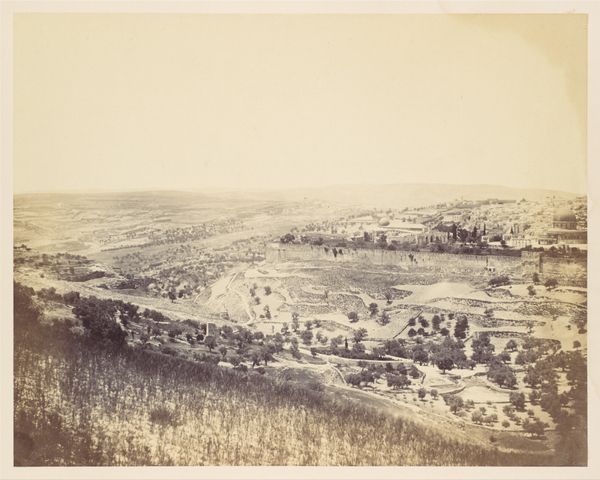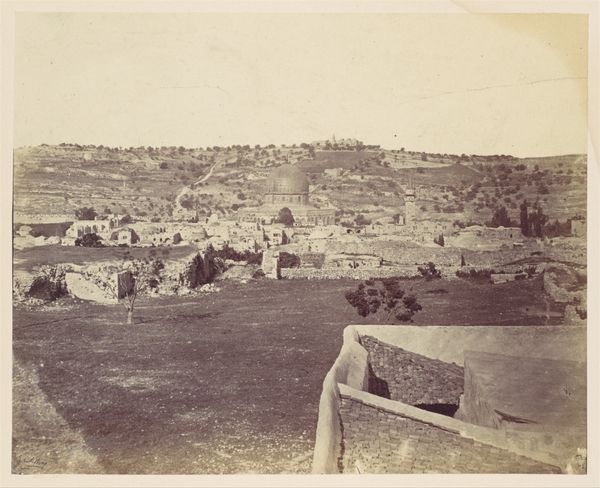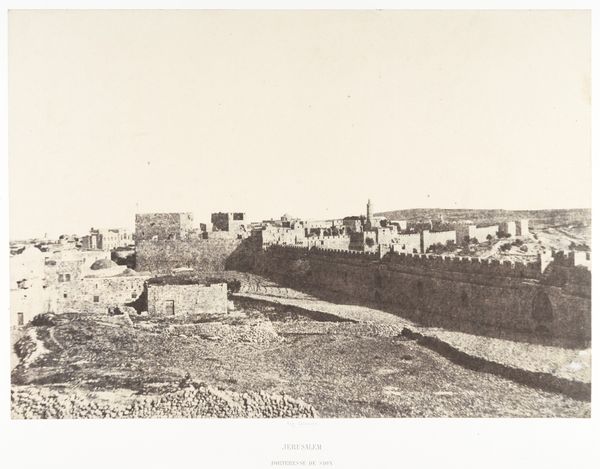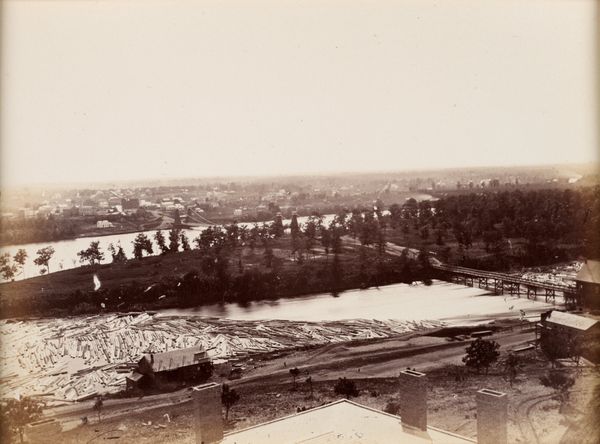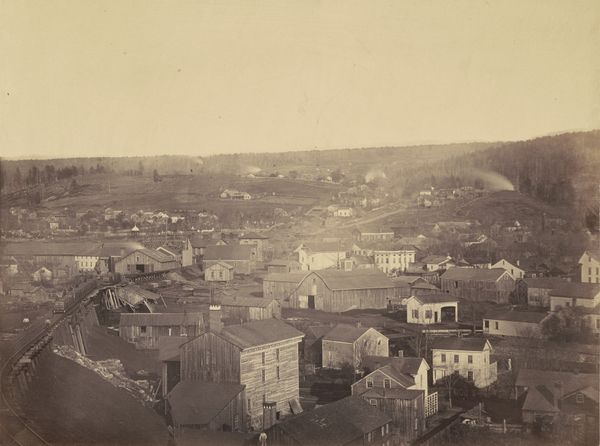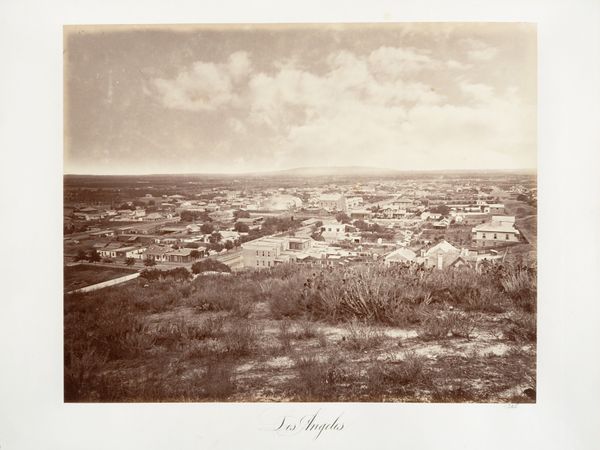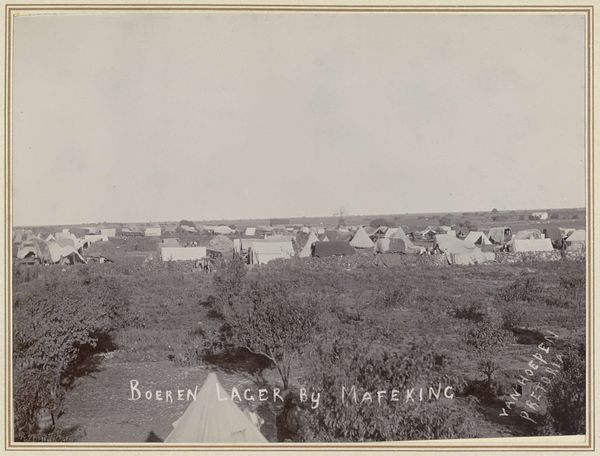
daguerreotype, photography
#
landscape
#
daguerreotype
#
photography
#
19th century
Dimensions: 6 1/16 x 8 5/16 in. (15.4 x 21.11 cm) (image)10 x 11 13/16 in. (25.4 x 30 cm) (mount)
Copyright: Public Domain
Curator: Today, we’re examining an 1857 daguerreotype by Benjamin Franklin Upton titled “St. Anthony and Minneapolis.” Editor: My initial impression? It’s a ghostly landscape, sepia-toned and strangely calming. The clarity in some spots against the blur really has an impact, makes you question how photography documented progress. Curator: Precisely! It’s not just a pretty picture. Upton’s choice of medium, the daguerreotype, was state-of-the-art then, reflecting the era’s obsession with technological progress and documentary truth. Imagine the weight put on photography to freeze those transient buildings in time. Editor: And the way the buildings and trees seem to spring from the ground... There’s this sense of optimism mixed with the rawness of the untamed landscape. Do you think that roof we can see is where the photo was taken? How wild to just be able to snap that! Curator: It gives us a perspective over the nascent cityscape of Minneapolis as it grows into St. Anthony. Consider the socio-political climate. Manifest Destiny was the buzzword. This photograph visually participated in this ambition to control landscape and settle territory. Editor: So this is a record of colonization? Not exactly cheerful after that context! Is that how photography in general advanced because of colonization? Curator: Absolutely. Art like this aided and reflected cultural shifts as new political boundaries formed. This art would find purpose to persuade settlers to relocate, so the new territories would become established societies. But note the lack of people. Why so empty? Editor: You’re right, the stillness does feel charged, it’s as though time has frozen just before things start moving real fast. I like how this piece makes me wonder. I walk around it. Curator: It truly gives food for thought about progress, expansion, and even about photography itself as it was perceived during that historical flashpoint. Editor: It does, though... a still, unsettling photograph. Like looking at a landscape waiting to be written.
Comments
No comments
Be the first to comment and join the conversation on the ultimate creative platform.
